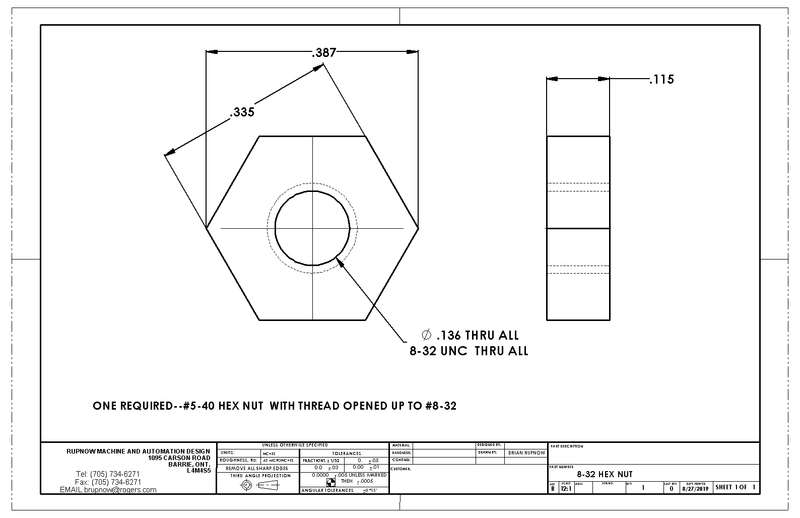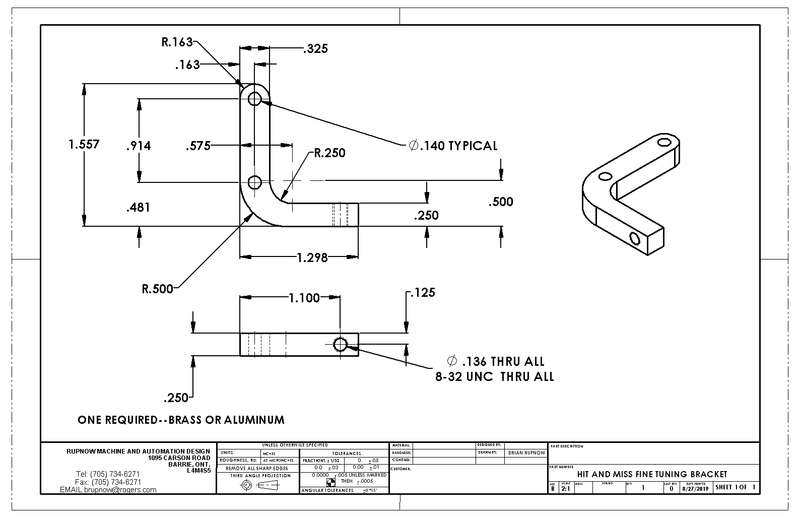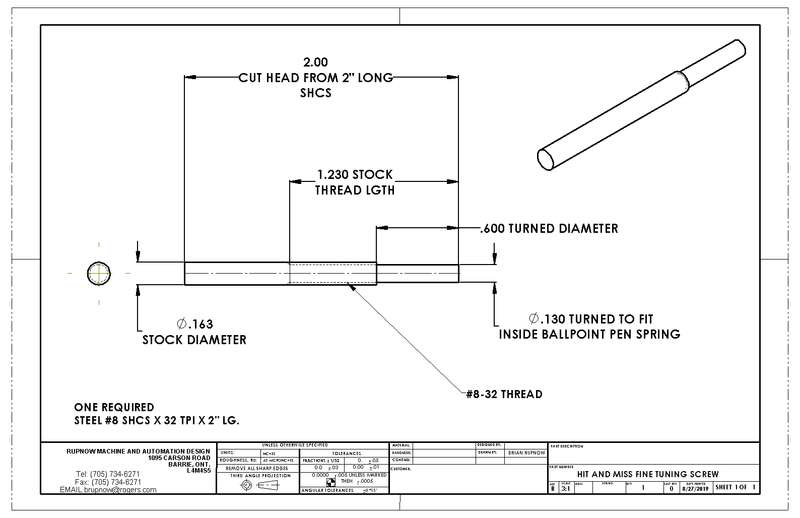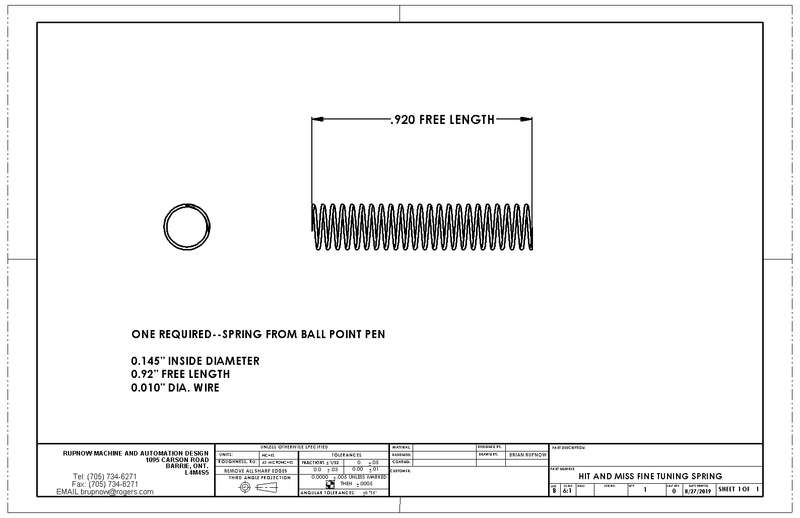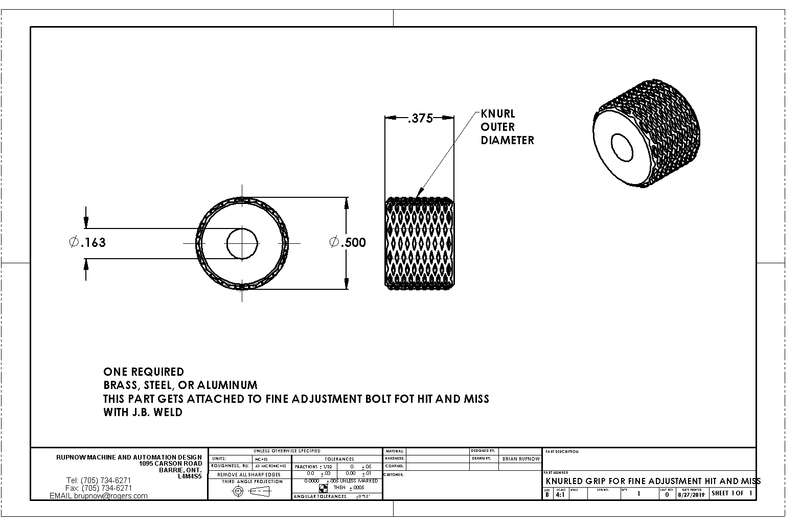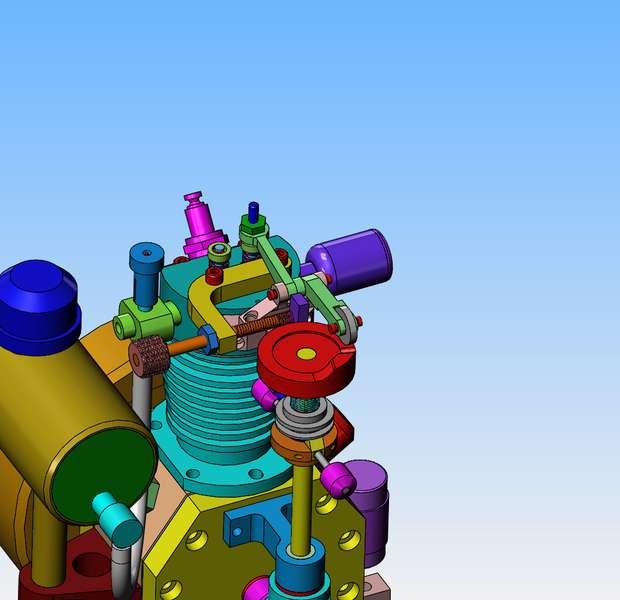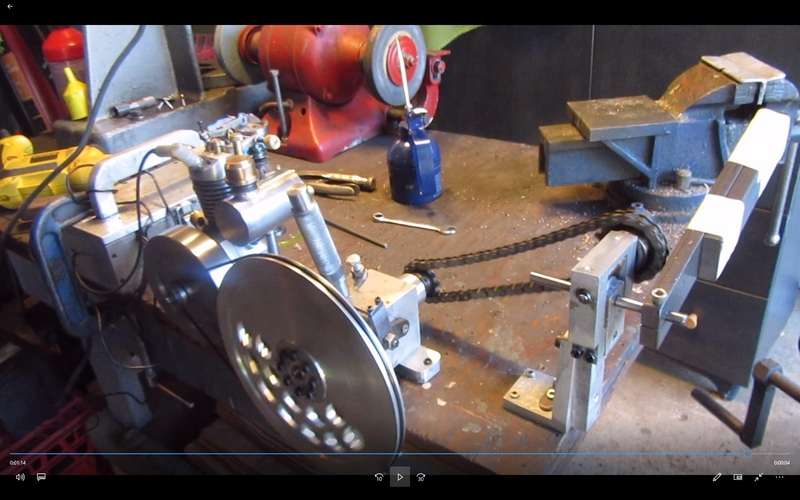I'm in thinking cap mode this afternoon. As the engine sets right now, there are only two ways to adjust the speed at which the engine kicks in and out of "hit and miss" mode. One is by changing the weight of the governor balls, and the other is by changing the strength of that light green spring on the vertical cam shaft. I think the governor balls are very close to the correct weight right now. The light green spring is a real pig to change, requiring almost complete disassembly of the cam shaft and brackets. However--If I were to add a third factor into this, I believe I could fine tune the kicking in and out of "hit and miss" mode. The way the engine works right now is that once the engine reaches a certain speed, centrifugal force makes the balls fly outward away from the cam-shaft (as it is shown in the model). The cams on top of the governor arms force the grey governor thimble upwards, compressing the light green spring and in turn makes the dark blue "hit and miss lever" rotate and end up underneath the rocker arm, which prevents the exhaust valve from closing. It works great, but I have no control over when this happens. If I were to make the yellow bracket which bolts in place with two of the head bolts, then I could tap a hole in it, and add the bronze colored adjustment screw and lock nut. The spring from a ball point pen would be Loctited to the bronze threaded adjustment screw, and the other end would bear against the dark blue "hit and miss lever". Any pressure applied to the "hit and miss lever" by the spring would counteract the force applied by the light green governor spring. This should give me the ability to fine tune the rpm at which the engine kicks in and out of "hit and miss" mode.
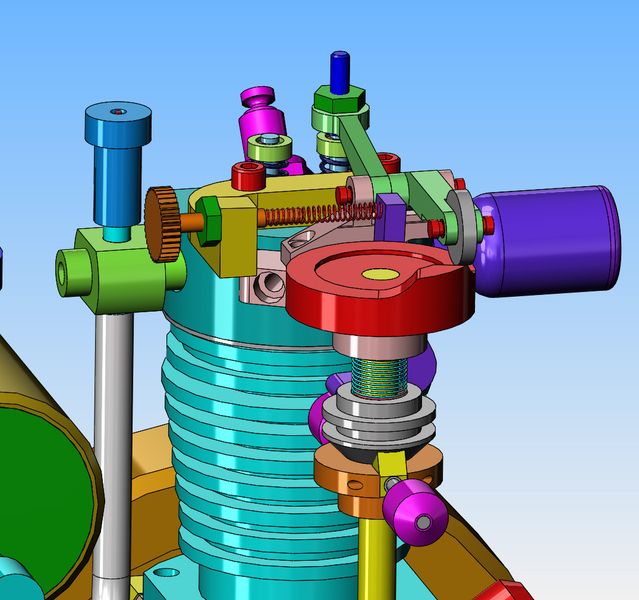
Why not just add a collar with set screws on top of the green spring? Just leave enough room above it for height adjustments.
Or if you know the spring is too strong, pull out the top or bottom winding enough to snip off 1/2 to 1 coil at a time. When it is right, just stop. Disadvantage to this method no ability to easily reverse a change. The movable collar is an easy and adjustable solution.





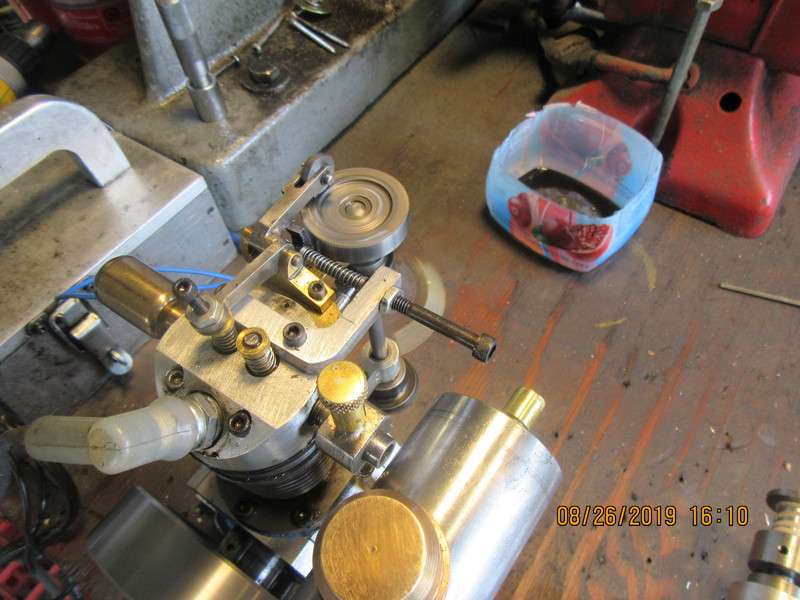













![DreamPlan Home Design and Landscaping Software Free for Windows [PC Download]](https://m.media-amazon.com/images/I/51kvZH2dVLL._SL500_.jpg)













![MeshMagic 3D Free 3D Modeling Software [Download]](https://m.media-amazon.com/images/I/B1U+p8ewjGS._SL500_.png)




























